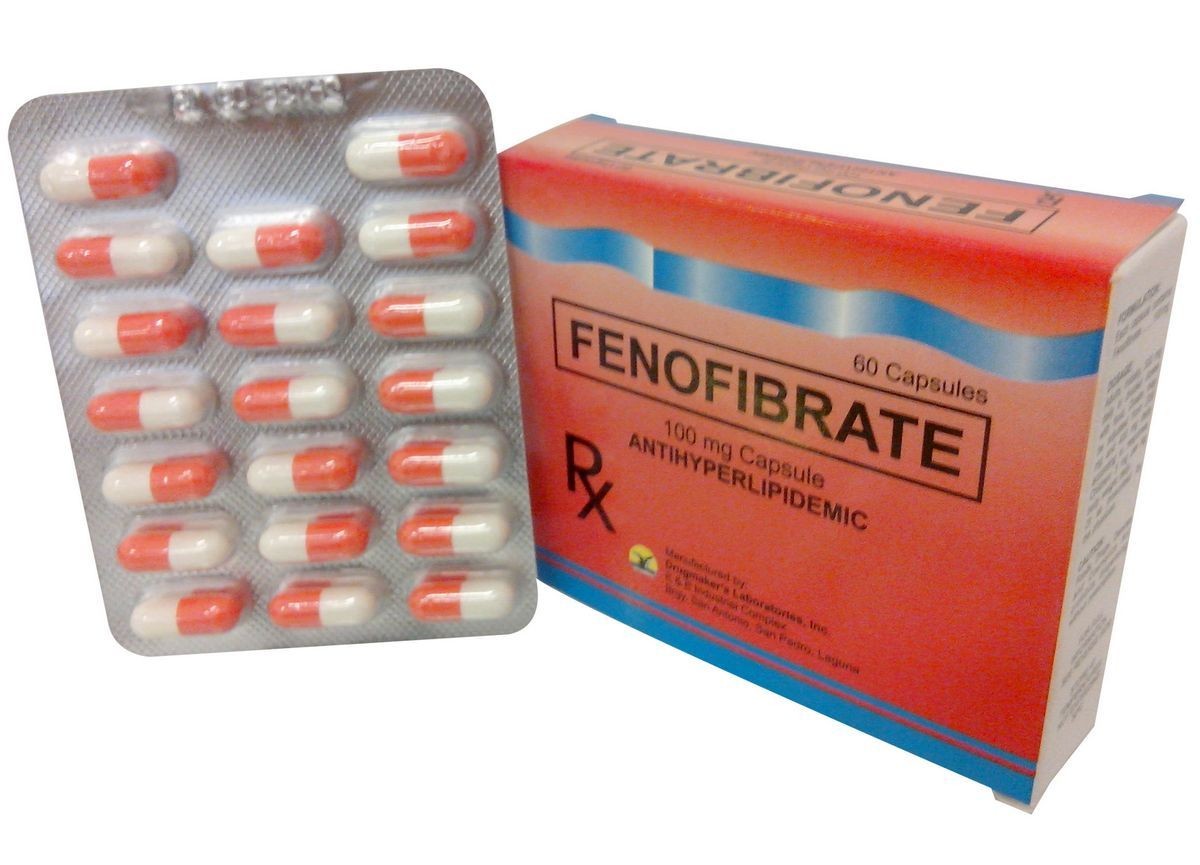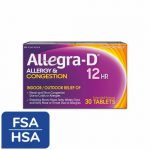
Contents
Fenofibrate
Fenofibrate is a medication used to modulate fatty substances (lipids) in the blood. It reduces blood levels of triglycerides and the types of cholesterol that increase the risk for plaque buildup in arteries (atherosclerosis), and increases the type of cholesterol that is beneficial to health.
- Triglycerides and cholesterol are synthesized in the liver and absorbed from our diet. While lipids are essential for many bodily functions, excess levels can clog blood vessels and increase the risk for heart disease, stroke, and other diseases. The main types of lipids in the body are:
- Triglycerides: The most common form of fat used as fuel and for energy storage.
- Cholesterol: A waxy combination of lipid and protein used to build cell membranes, produce hormones, bile acids, and vitamin D.
- LDL cholesterol: Low density lipoprotein (LDL) carries cholesterol to cells all over the body.
- VLDL cholesterol: Very low density lipoprotein (LDL) is made by the liver to transport triglycerides to cells; VLDL turns into LDL after delivering triglycerides to cells.
- HDL cholesterol: High density lipoprotein (HDL) absorbs cholesterol from cells and transports it back to the liver to be converted into bile acids for digestion.
Fenofibrate reduces levels of triglycerides, total cholesterol, LDL and VLDL cholesterol, and increases HDL cholesterol levels. It works by activating peroxisome proliferator activated receptor-alpha (PPAR-A) in the liver. This results in:
- Activation of lipoprotein lipase, the enzyme that breaks down triglyceride-rich lipoproteins, leading to lower levels of triglycerides and apolipoprotein B, the protein component of LDL and VLDL cholesterol.
- Increase in the synthesis of HDL cholesterol and its major protein components apolipoproteins A-I and A-II.
Fenofibrate also reduces uric acid levels by increasing its excretion in urine. It is used to treat:
- High total blood cholesterol levels (hypercholesterolemia)
- High blood triglyceride levels (hypertriglyceridemia)
- Mixed dyslipidemia (high triglyceride levels and low HDL cholesterol)
Warnings
- Do not administer fenofibrate to patients with hypersensitivity to fenofibrate or any of its components.
- Do not administer fenofibrate to patients with severe kidney impairment, gallbladder disease, active liver disease, or nursing mothers.
Side effects of fenofibrate
Common side effects include:
- Abnormal liver function tests
- Increase in liver enzymes ALT and AST
- Increase in creatine phosphokinase (CPK)
- Respiratory disorder
- Abdominal pain, headache, back pain, nausea, constipation, and nasal inflammation (rhinitis)
Less common side effects include:
- Flatulence, diarrhea, peptic ulcer, pancreatitis, gallstones, liver inflammation, liver cirrhosis, myositis, myopathies, arthralgia, weakness, rash and skin peeling, dysrhythmias, peripheral vascular disease, pulmonary embolism, CNS depression, kidney damage or failure, anemia, leukopenia, decrease in hemoglobin and hematocrit, reduced HDL cholesterol level, and interstitial lung disease.
This is not a complete list of all side effects or adverse reactions. Contact your doctor for medical advice about serious side effects or adverse reactions.
QUESTION
What are the dosages of fenofibrate?
TriCor tablet
Lofibra tablet
Fenoglide tablet
Triglide tablet
Lipofen capsule
Adult:
TriCor
- Hypercholesterolemia, mixed dyslipidemia: Initially, 145 mg orally once a day
- Hypertriglyceridemia: Initially, 48-145 mg orally once a day
- Titrate every 4-8 weeks up to no more than 145 mg orally once a day
Triglide
- Hypercholesterolemia, Mixed Dyslipidemia: Initial 160 mg orally once a day
- Hypertriglyceridemia: 50-160 mg orally once a day initially
Lipofen
- Hypercholesterolemia, Mixed Dyslipidemia: Initial 150 mg orally once a day
- Hypertriglyceridemia: Initial 50-150 mg orally once a day
Lofibra tablets
- Hypercholesterolemia, Mixed Dyslipidemia: 160 mg orally once a day
- Hypertriglyceridemia: 54-160 mg orally once a day
Fenoglide
- Hypercholesterolemia, Mixed Dyslipidemia: 120 mg orally once a day
- Hypertriglyceridemia: 40-120 mg orally once a day
Dosing Modifications
- TriCor (CrCl <30): Initial 48 mg/day. Adjust dose accordingly.
- Triglide: Initial 50 mg/day
- Lipofen: Initial no more than 50 mg/day
- Lofibra tablets: Initial 54 mg/day
- Fenoglide: Initial 40 mg/day
Dosing Considerations
- Rule out secondary causes of hyperlipidemia before initiating therapy
- Withdraw therapy if no adequate response seen after 2-3 months
- Use with caution in the elderly; dose adjustments may be necessary
Administration
- TriCor, Triglide, and Lofibra tablets can be taken without regard to meals
- Lipofen: Take with meals
Geriatric:
TriCor
- Hypercholesterolemia, mixed dyslipidemia, hypertriglyceridemia
- Initial: 48 mg/day; evaluate before increasing dose
Triglide
- Hypercholesterolemia, mixed dyslipidemia, hypertriglyceridemia
- Initial: 50 mg/day
Lipofen
- Hypercholesterolemia, mixed dyslipidemia, hypertriglyceridemia
- Initial: No more than 50 mg/day
Lofibra tablets
- Hypercholesterolemia, mixed dyslipidemia, hypertriglyceridemia
- Initial: 54 mg/day
Fenoglide
- Hypercholesterolemia, mixed dyslipidemia, hypertriglyceridemia
- Initial: 40 mg/day
Pediatric:
- Safety and efficacy not established
Overdose
- Symptoms of fenofibrate overdose include gastrointestinal distress.
- There is no specific treatment for overdose; treatment is supportive and symptomatic.
- If indicated, unabsorbed drugs may be removed from the stomach by induced vomiting or gastric lavage.
Drug interactions
Inform your doctor of all medications you are currently taking to avoid possible drug interactions. Do not begin or change the dosage of any medication without your doctor’s recommendation.
- Fenofibrate has no known severe interactions with other drugs.
- Serious Interactions of fenofibrate include abametapir, apalutamide, atorvastatin, colchicine, fexinidazole, fluvastatin, pravastatin, rosuvastatin, simvastatin, and tucatinib along with colestipol, ezetimibe, levoketoconazole, octacosanol, and ribociclib.
It is important to always inform your doctor, pharmacist, or healthcare provider about all prescription and over-the-counter medications you use, as well as the dosage for each medication.
Pregnancy and breastfeeding
- There is insufficient data on fenofibrate use in pregnancy to determine risk of miscarriage, maternal risks, or fetal harm. Use only if potential benefit justifies potential risk to fetus.
- There is no information on the presence of fenofibrate in human milk, or its effects on the breastfed infant or on milk production. Breastfeeding women should avoid use because of the potential for serious adverse reactions in breastfed infants, such as disruption of infant lipid metabolism.
Additional notes
To maintain optimal lipid levels, it is important to:
- Eat a low-fat, low-cholesterol diet
- Maintain a healthy weight
- Exercise regularly
- Avoid smoking
Summary
Fenofibrate is a medication used to reduce blood levels of triglycerides and the types of cholesterol that increase the risk for plaque buildup in arteries. Common side effects include abnormal liver function tests, increase in liver enzymes, respiratory disorder, abdominal pain, headache, back pain, nausea, constipation, and nasal inflammation. Do not take fenofibrate if you are breastfeeding. Consult your doctor if pregnant.


